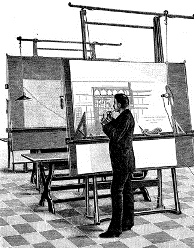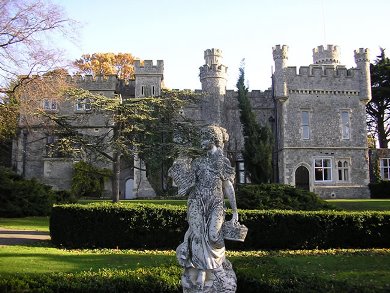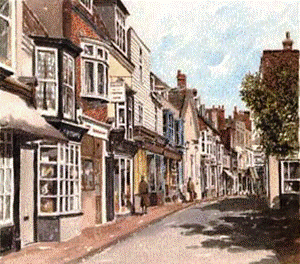albert edward mallandain + florence welton

Albert was born on 12 July 1866 in Walworth, Surrey, the son of Peter Mallandain and Jane Oddy. He appears in the 1881 Census, living with his family at 65 Leipsie Road in Camberwell and working as a Draughtsman’s Assistant. Albert was still living with his family at the time of the 1891 Census but in the intervening years had risen from a position as an assistant to a fully fledged Lithographer and Printer.
Albert continued to advance in his career and went into business for himself. He appears in the 1892 Post Office Directory as a Draughtsman at 1 & 2 Poultry, EC and in the 1895 Directory, his business address was recorded as 51 Cheapside.
Albert married Florence Welton on 16 July 1896 at Christchurch in Lambeth. His occupation was listed as Lithographer and he lived at The Vicarage on Camberwell Road. Florence was born in Deptford on 26 April 1872, the daughter of Charles Keene Welton and Elizabeth Wilkinson, and she was living at Grove Park, Camberwell at the time of her marriage.
It appears they moved in with Florence’s family following their marriage as they are recorded in the 1901 Census, living at 1 Grove Park, Camberwell along with Charles and Elizabeth Welton and Albert’s occupation was again listed as Lithographer. But by 1911, they had moved to Beckenham, Kent and were living in a 12 room house on Abermarle Road with two servants, a cook and a domestic, and Albert’s occupation was listed as Wholesale Stationer.
Over the years, Albert built a successful business as a Printer and Paper Manufacturer. In 1907, he was still listed as a Draughtsman at 51 Cheapside. But by 1926, the company was listed as Albert E. Mallandain Ltd, Paper Makers and they had offices at 36 & 37 King Street in Cheapside and a paper mill at Park Royal Willesden north west of ondon.
In 1921, Albert purchased The Towers, a mansion overlooking the sea at Tankerton, a suburb of Whitstable in Kent. At the time, his occupation was listed as a Paper Manufacturer. Albert also purchased the purely ceremonial title of Lord of the Manor.

‘In 1921 it passed into the hands of Mr Albert Mallandain, a paper manufacturer, and his wife, who used it as a holiday residence. The Mallandains had a Rolls Royce, but he often walked to the station each morning, leaving by the exit in The Tower, instead o f the main entrance down to the gateway. Mrs Kate Anderson, a parlour maid, described the elegantly furnished home she looked after with three other female staff as hard work, with many stairs to continually run up and down from dawn to dusk. A grandfather clock stood in the entrance hall, the drawing room had a log fire showing up the tapestries on the panelling. The Mallandains’ bedroom was on the top of The Tower where they had their breakfast. But she had happy memories of her time and the entertaining of week-end guests.’
Albert and his wife lived at The Towers from June until September and he maintained the life of a country gentleman in grand style. They enjoyed entertaining: ‘there were frequent weekend house parties and their annual Garden Party was the social event of the Whitstable calendar.’ They also took an active role in assisting the residents of the local Almshouses by employing a nurse to care for them, organizing an annual coach trip and inviting them to the annual Garden Party.
Albert also had business interests in South Africa — it is believed he owned several fruit tree farms — and travelled there often. Ships Passenger lists record eleven voyages from Southampton to the Cape or Durban between 1923 and 1938. Florence accompanied him on most of the trips and they always travelled in a First Class cabin. His last recorded trip to South Africa was in 1953. The passenger lists also include one trip to Canada in 1913 and although the manifest does not contain a great deal of information, it does note that they were destined for Toronto, Ontario. It’s possible that Albert and his wife took time out to visit his brother Frank who emigrated to Quebec some years before.

In 1932, Albert’s failing heath forced him to retire and he moved to Copsem Manor in Claygate near Esher in Surrey. He no longer travelled to Tankerton and in 1935, he sold The Towers to the local council on the understanding it would be made available as a public building. The property remains in the hands of the local council to this day and the former billiard room, now known as The Mallandain Room, is a popular venue for wedding receptions and parties.
Albert also maintained a suite at the Dorchester Hotel in Park Lane, London for many years. A report in the Irish Times on 17 September 1951 noted that Scotland Yard was investigating a theft from their bedroom at the Hotel. While Albert and his wife slept, the thieves broke into the room, ransacked the drawers and cupboards and stole property valued at £8000. The report did not include any details on the property stolen or if it was ever recovered.
Florence Welton died in Westminster in 1951 and Albert died at Copsem Manor on 24 November 1956. Albert left an estate valued at £205,788; when his will was signed in August 1955, his sister Rose Emma was his only surviving sibling. He left his house at 32 Wyatt Park Road in Streatham to her but she predeceased him by three months. She was living in the house as early as 1928 and up to her death in August 1956. It is not known if Albert ever lived in the house or if he simply purchased it as an investment or as a residence for his sister.
Albert also provided legacies for his remaining personal staff including his chauffeur, Charles Henry Richardson, and servants Alice, Edith and Florence Moore. He also provided a legacy for all employees of AE Mallandain with more than 10 years service equivalent to 1/3 of their annual salary. Despite the fact he sold Tankerton 20 years before his death, he obviously had fond memories of his time in Whitstable as he provided legacies for a nurse at the almshouses, his gardener, and the trustees of the almshouses. He also left legacies for the staff at the Dorchester Hotel including the nurse, the sister in charge and the cashier in appreciation of their kindness, care and sympathy following his wife’s death.